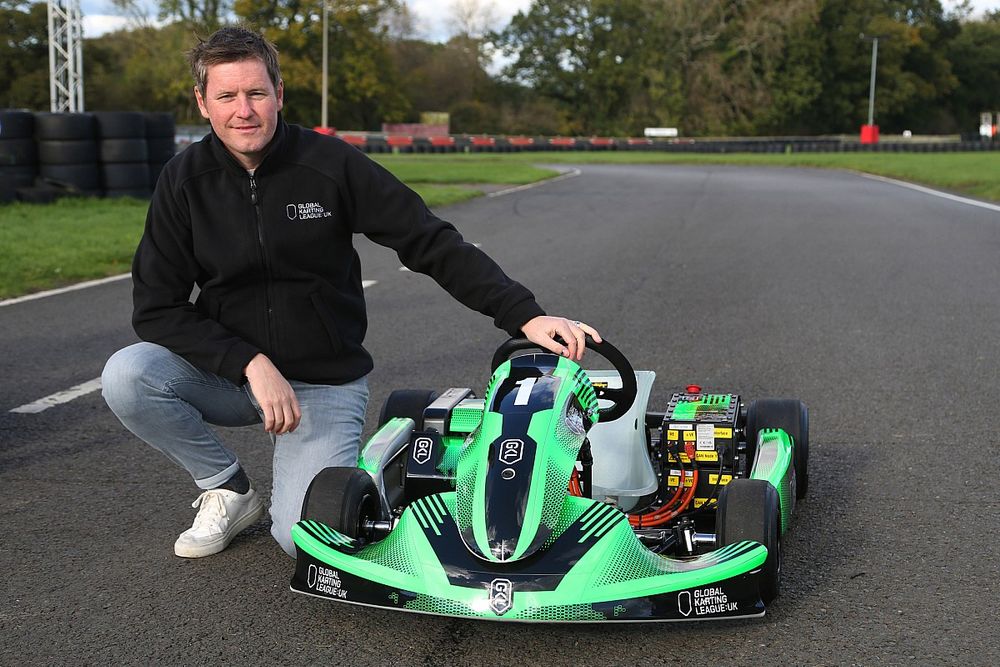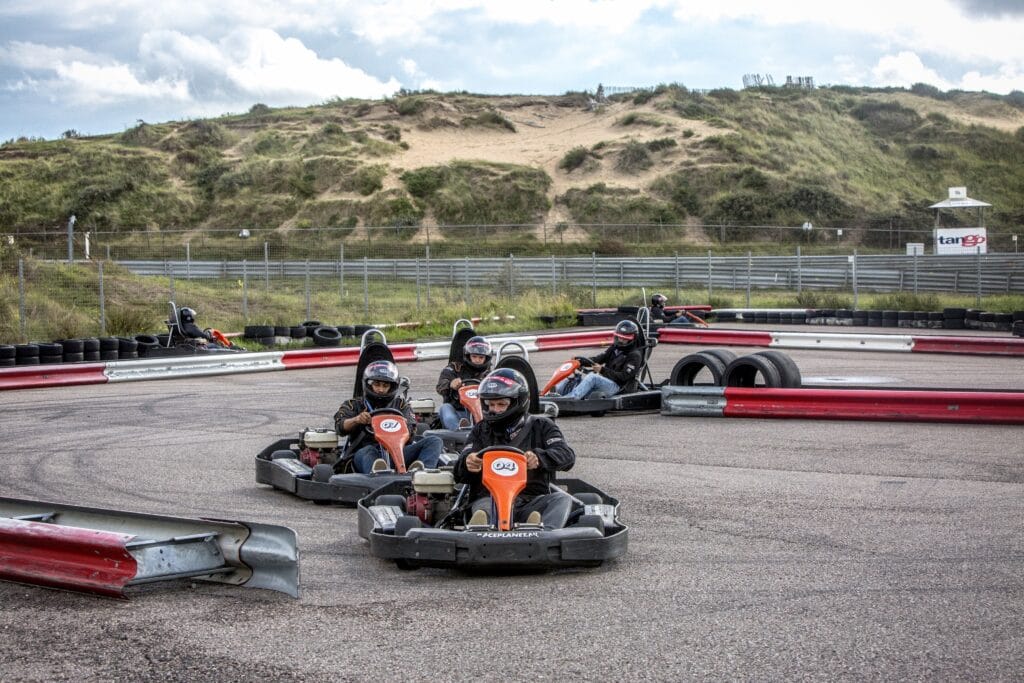
Karting, an exhilarating blend of speed, skill, and strategy, has captivated enthusiasts worldwide. Whether you’re an adrenaline junkie seeking a competitive edge or simply looking for a fun-filled activity with friends and family, karting offers an unforgettable experience. However, as with any motorsport, safety remains paramount to ensure a positive and injury-free experience. This comprehensive guide delves into the essential safety measures that underpin the thrilling world of karting, encompassing equipment, track regulations, and risk management strategies.
Essential Safety Equipment: Gearing Up for the Track
Before embarking on your karting adventure, it’s crucial to equip yourself with the proper safety gear, transforming into a driver ready to conquer the track. Helmets stand as the first line of defense, providing vital protection for your head. Ensure your helmet meets the highest safety standards, such as Snell, DOT, or ECE certifications, and offers full coverage of your head and face. Regular inspections are essential to identify and replace any cracked or damaged helmets.
Next, don your flame-retardant driving suit, safeguarding you from potential fire hazards. The suit’s abrasion-resistant material minimizes injuries in case of falls, while its comfortable and flexible design allows for unrestricted movement. Gloves, the guardians of your hands, shield them from blisters, burns, and cuts. They enhance grip for better kart control and ensure finger dexterity for operating the steering wheel and pedals.
Complete your safety ensemble with closed-toe shoes, preventing foot injuries. Their non-slip soles maintain traction on the pedals, and their comfortable support ensures endurance during extended driving sessions. With this protective gear in place, you’re ready to step onto the track with confidence.
Track Design and Regulations: A Safe Circuit for Thrilling Races
The karting track serves as the stage for exhilarating races, and its design plays a pivotal role in ensuring safety. Clear delineation of racing lanes and run-off areas guides drivers and prevents collisions. Strategically placed safety barriers act as guardians, keeping karts within the track’s confines. Escape routes provide safe exits in case of emergencies.
A smooth and even track surface minimizes bumps and vibrations, enhancing control and reducing the risk of accidents. Adequate drainage prevents water accumulation and loss of traction, ensuring consistent driving conditions. Regular inspections and maintenance address any potential hazards, keeping the track in top condition.
Track safety features further enhance the protective environment. Adequate lighting illuminates the track during low-light conditions, ensuring clear visibility. Clear signage communicates track rules, speed limits, and emergency procedures, keeping drivers informed. Trained marshals monitor the track, ready to respond to incidents promptly.
Risk Management Strategies: Proactive Measures for a Safe Karting Experience
Driver education and training lay the foundation for safe karting practices. Mandatory safety briefings cover track rules, driving techniques, and emergency procedures, empowering drivers with the knowledge to navigate the track responsibly. Instruction on proper kart operation, including braking, acceleration, and cornering techniques, ensures control and prevents accidents. Emphasis on safe driving practices, such as avoiding aggressive maneuvers and maintaining awareness of surroundings, promotes a culture of safety.
Kart maintenance and inspection are crucial to prevent mechanical failures that could lead to incidents. A regular maintenance schedule ensures karts are in optimal condition. Pre-race inspections identify and address any potential mechanical issues, preventing them from disrupting the race. Prompt repair or replacement of damaged kart components ensures the integrity of the vehicles.
Incident reporting and investigation form a critical feedback loop for continuous safety improvement. A system for reporting and documenting incidents allows for thorough investigation to identify root causes and implement preventive measures. Sharing incident data and lessons learned with other karting facilities fosters industry-wide safety advancements.
Conclusion: Embracing the Thrill with Safety at the Forefront
Karting, when approached with safety as a top priority, offers an exhilarating and enjoyable experience for all participants. The combination of essential safety equipment, well-designed tracks, and proactive risk management strategies creates a protective environment where the thrill of speed can be savored without compromising safety. As you embark on your karting adventure, remember that safety is not an afterthought but an integral part of the experience, allowing you to fully embrace the adrenaline rush and create lasting memories on the track.
Physical Fitness and Pre-Race Preparation:
Engaging in karting demands a certain level of physical fitness. While not an extreme sport, it requires endurance to withstand the physical demands of racing. Consider activities like cardiovascular exercise and core strengthening to improve your stamina and ability to handle the G-forces experienced while cornering. Additionally, a good night’s sleep before your race ensures you’re well-rested and alert, maximizing your reaction time and decision-making skills.
Weather Conditions and Adjustments:
The weather can significantly impact track conditions and driving techniques. Rain, for example, reduces traction and necessitates adjustments in braking distances and cornering speeds. Familiarity with wet-weather driving techniques is crucial. Conversely, hot weather can lead to dehydration and fatigue. Proper hydration and ventilation are vital to maintain focus and prevent overheating. Facilities typically have procedures in place for extreme weather conditions, so always be mindful of weather forecasts and adjust your approach accordingly.
Maintaining a Positive Attitude and Sportsmanship:
Karting fosters a competitive spirit, but maintaining a positive attitude and good sportsmanship are paramount. Aggressive driving or reckless maneuvers increase the risk of accidents. Respect for fellow competitors and adherence to track rules create a fun and safe environment for everyone. Celebrate the thrill of the race, regardless of your placement, and prioritize safety over cutthroat competition. By prioritizing sportsmanship, you contribute to a positive karting experience for yourself and others.
Incorporating these additional considerations alongside the previously discussed safety measures ensures a well-rounded approach to safe and enjoyable karting.
Conclusion: Embracing the Thrill with Safety at the Forefront
Karting, when approached with safety as a top priority, offers an exhilarating and enjoyable experience for all participants. The combination of essential safety equipment, well-designed tracks, proactive risk management strategies, and the considerations outlined above creates a protective environment where the thrill of speed can be savored without compromising safety. As you embark on your karting adventure, remember that safety is not an afterthought but an integral part of the experience, allowing you to fully embrace the adrenaline rush and create lasting memories on the track. So, buckle up, equip yourself with the proper knowledge and gear, and get ready to experience the electrifying world of karting – safely and responsibly!
Leave a Reply